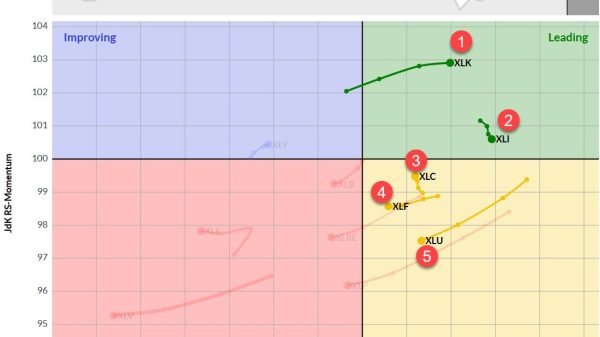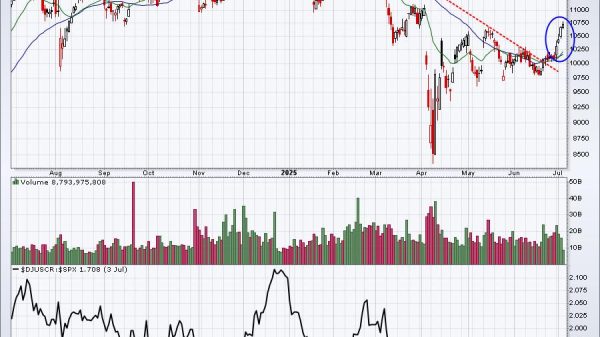How to Create a Blockchain? Beginner’s Guide
Embarking on the journey to create a blockchain opens up a realm of possibilities in the digital world. At the heart of blockchain technology lies the power to revolutionize how we interact with everything from digital currency to real estate. But how to create a blockchain? What are the necessary steps?
This guide will dive into the intricacies of blockchain development, from choosing the right programming language to selecting between existing blockchain platforms like Ethereum or Hyperledger Fabric.
Building a blockchain from scratch is a time-consuming but rewarding endeavor, involving decisions like opting for proof of work, proof of stake, or proof of elapsed time as the consensus mechanism.
As you learn to create a block, implement digital signatures, and write source code, you’ll uncover the potential for decentralized applications. Whether you’re looking to innovate in digital transactions or reshape the real estate market, mastering blockchain development is a pivotal first step in bringing your vision to life.
Blockchain is a new technology considered by many to be exclusively for cryptocurrencies. In reality, it can intervene in several other fields such as education, fashion, or medicine. That being said, to make the most of this technology, it will be necessary to master its operation and its creation. What are the different steps to create a blockchain?
What is a blockchain?
A blockchain is an unchangeable digital ledger that stores data and transactions across a network of computers. It is a chain of linked blocks where each block records a transaction carried out. Each block depends on another block, which makes the blockchain an irreversible chain and therefore an immutable and robust system.
Blockchain has several features. Indeed, users of a blockchain network can verify data transactions carried out in the same network. The blockchain is able to maintain the traceability of people who have carried out certified transactions.
In summary, this technology allows the decentralization of transaction flows, the recording of data, the verification of the execution of a contract, and the application of guarantee processes in digital and trading databases. A blockchain also offers the possibility of mining cryptocurrencies for their online distribution.
How does blockchain work?
Blockchain operates as a decentralized ledger, fundamentally transforming how data is stored and verified across a network. Here’s a breakdown of how it works, based on the provided text:
Chain of Blocks
A blockchain is essentially a series of blocks linked together. Each block, akin to a table in a database, contains data like transactions, nonce, target bit, difficulty, timestamps, and block IDs. Unlike traditional databases, these blocks can neither be updated nor deleted.
Immutable Ledger
The information within these blocks, including the cryptographic hashes of the current and previous blocks and a Merkle tree (a structure that summarizes all the transactions in a block), is cryptographically sealed. This sealing makes the blockchain an immutable ledger, ensuring that once data is recorded, it cannot be altered.
Distribution Across Nodes
This chain of blocks is distributed across various nodes (computers or miners) in the network through a peer-to-peer (P2P) network. Each node holds a copy of the entire blockchain, ensuring decentralization.
Securing Data
The data within the blockchain is secured using cryptographic hashing and digital signatures. Cryptographic hashing means converting an input (or ‘message’) into a fixed-size string of bytes, which is typically a hash. Digital signatures ensure the authenticity and integrity of the data.
Consensus Mechanism
For new blocks to be added to the blockchain, they must be validated by a consensus algorithm. This algorithm can vary, with Proof of Work (PoW), Proof of Stake (PoS), and others like PBFT (Practical Byzantine Fault Tolerance) being common methods. These mechanisms are essential for maintaining the network’s integrity and agreement on the state of the blockchain.
Block Validation
This process, often referred to as mining (in PoW) or forging (in PoS), involves nodes agreeing on the validity of transactions and the blocks that contain them. Successful validation leads to the addition of a new block to the blockchain.
How to create your own blockchain
To build a blockchain, you have two options.
The first and easier approach involves leveraging pre-built open-source blockchain platforms like Ethereum, Fabric, EOS, or Cardano. Using these platforms, you can create distributed applications, altcoins, decentralized finance (DeFi) projects, and non-fungible tokens (NFTs), without having to tackle the complexities of the core engine.
If this approach doesn’t meet your specific needs, you can opt to build a blockchain from scratch. Alternatively, you can fork an existing blockchain’s open-source code and then modify or improve it. For instance, developers created Litecoin and Bitcoin Cash by forking from Bitcoin. This method, though more challenging and time-consuming, offers greater customization and control. It demands considerable effort and a strong development team.
How to create a blockchain: beginner step-by-step guide
The implementation of a blockchain uses peer to peer technology, the technical characteristics necessary for unique account addresses and the various methods of possessing a private key. As for its programming, it can be structured in several stages.
Platform selection
The first thing to do when implementing a blockchain is to select the platform to use. The majority of companies embarking on a blockchain project opt for the open source environment offered by Ethereum, which is a blockchain network.
Ethereum client environments are based on common languages such as C++, JavaScript, Go or Python. Selecting your platform will therefore come down to installing the client you have chosen on your computer.
Blockchain initialization
Second, it comes down to initializing the blockchain. This step consists of manually defining a first block by creating a JSON file. This block must contain all the characteristics of the chain.
Thus, the random value used by the cryptographic hash, the level of requirements linked to the cryptographic processing and the validation duration between two successive blocks are essential parameters to be informed.
Once the file is correctly completed, it will be up to the client to create the blockchain file and initialize it. This being said, the commands will be replicated as many times as your network has nodes.
Choosing a good consensus protocol
Here, it comes down to validating and securing the content of the blocks through a consensus protocol. The latter varies depending on whether your blockchain is public or private. Thus, due to the high number of actors and the multitude of nodes existing in a public blockchain, the concept of proof of work is the most suitable protocol.
On the other hand, in a private configuration, consensus protocols such as proof of stake or proof of authority are more readily available. That said, the chosen protocol as well as the number of nodes are entered in the configuration file which is executed in a command line.
Execution of a first “smart contract”
In reality, creating a blockchain is of no interest if it does not allow a “smart contract” to run on it. It is a smart contract that executes automatically once it has reached a predefined threshold such as a date or a well-identified event.
On Etherum, the reference language used to develop a smart contract is Solidity. It is a simple language which is similar to a programming environment with notions of class, attribute and function. It should also be noted that the “smart contract” is not designed as a web application. Its execution requires deeper knowledge of the blockchain and its constraints.
Blockchain debugging
The final step in creating a blockchain, debugging is a crucial phase that should not be taken lightly. Unlike programs running on a computer, a block runs across all nodes so that each t
Network termination must result in processing that matches that of others. This process makes debugging the blockchain quite complex which is done groping in error mode.
Unlike traditional applications, the slightest modifications to a blockchain remain stored in the blockchain. It will then be necessary to create a new smart contract to resolve the problem. Given the complexity of debugging a blockchain, it is advisable to call on an expert to audit your smart contract when you want to create a blockchain.
Three blockchain types
Blockchain technology, with its innovative approach to data management and security, comes in various forms to cater to different needs and scenarios. The three primary types of blockchains are private, public, and hybrid, each with unique characteristics and use cases.
Private Blockchain
Usage: Private blockchains are typically used within a single organization or by a consortium of known entities. They are not open to the public. Control: A single organization or a group of known entities manages the network. This centralized control allows for quicker transactions and more efficient governance. Access: Access to a private blockchain is restricted, and participants require permission to join. Privacy & Security: They offer higher levels of privacy and security, as the entities are known and trusted. Example: Hyperledger Fabric is a notable example of a private blockchain. It’s often used in enterprise settings for supply chain management, identity verification, and more. Use Case: Ideal for businesses that require confidential transactions and data privacy, such as financial institutions or supply chain networks.Public Blockchain
Usage: Public blockchains are open to anyone, and all transactions are visible to every participant. Decentralization: They are fully decentralized, with no single entity owning or controlling the network. Participation: Any individual can participate in the network, conduct transactions, or become a miner (in PoW systems). Transparency: High levels of transparency, as all transactions are public and can be verified by anyone. Examples: Bitcoin and Ethereum are the most prominent examples, allowing peer-to-peer transactions without intermediaries. Use Case: Suited for scenarios that require transparency and trust, such as digital currencies and decentralized applications (dApps).Hybrid Blockchain
Combination: Hybrid blockchains blend elements of both private and public blockchains. They aim to leverage the benefits of both types while mitigating their limitations. Control & Access: They are typically controlled by a single organization but allow for certain data or transactions to be made public. Privacy & Transparency: Hybrid blockchains offer a balance between privacy for internal data and transparency for certain public transactions. Flexibility: They provide flexibility in terms of who can participate in the network and which transactions are made public. Use Case: Ideal for organizations that need a private network for internal use but also require a certain degree of transparency and interaction with the public blockchain, like in supply chain solutions where certain data needs to be public while keeping sensitive information private.Blockchain use cases
Real estate for land ownership tracking. Healthcare for secure patient data recording. Finance for reducing taxes, intermediaries, anti-money laundering, and facilitating cross-border payments. Supply chain management for tracking items and verifying authenticity. Cybersecurity, particularly against DDOS attacks. Digital Identity (DID), empowering users to own and share their data securely. Cryptocurrencies, including Bitcoin and meme coins like Dogecoin. Voting mechanisms.Key blockchain platforms and applications include Bitcoin, Ethereum, Hyperledger Fabric, EOS, Chainlink, Cardano, and Dogecoin. These platforms demonstrate the versatility and wide-ranging potential of blockchain technology.
The post How to create a blockchain? Beginner’s Guide appeared first on FinanceBrokerage.























